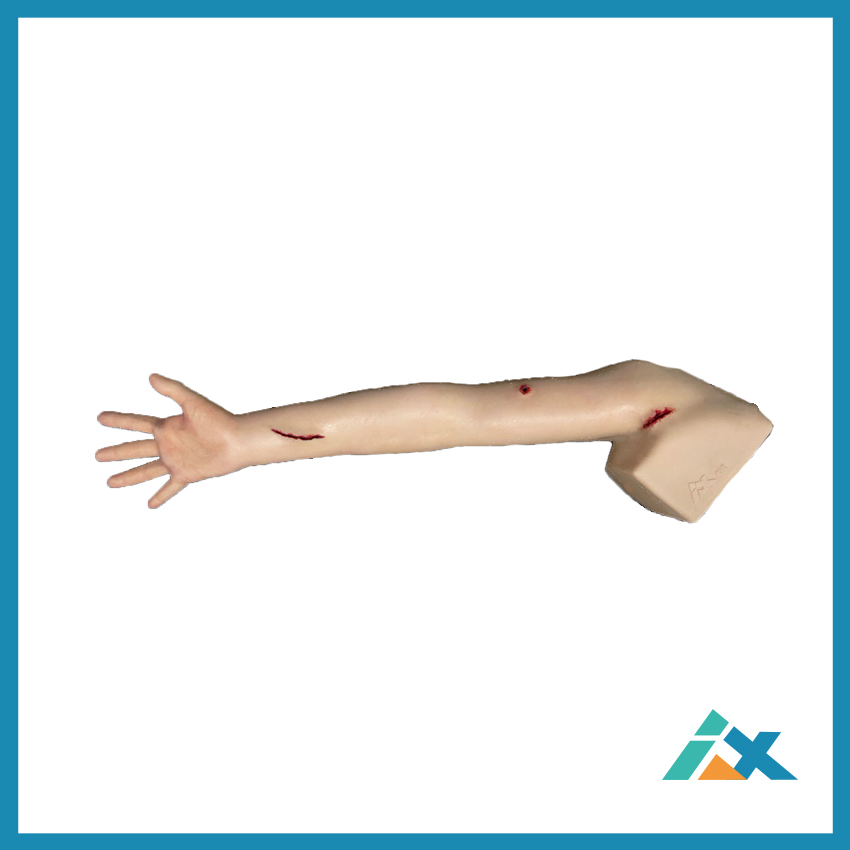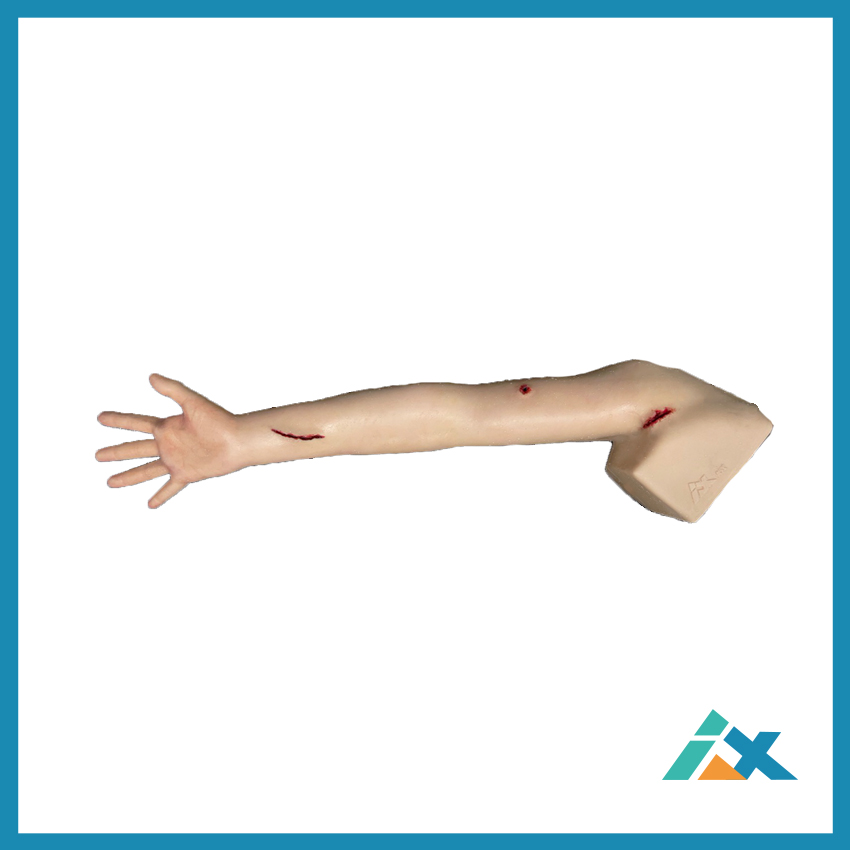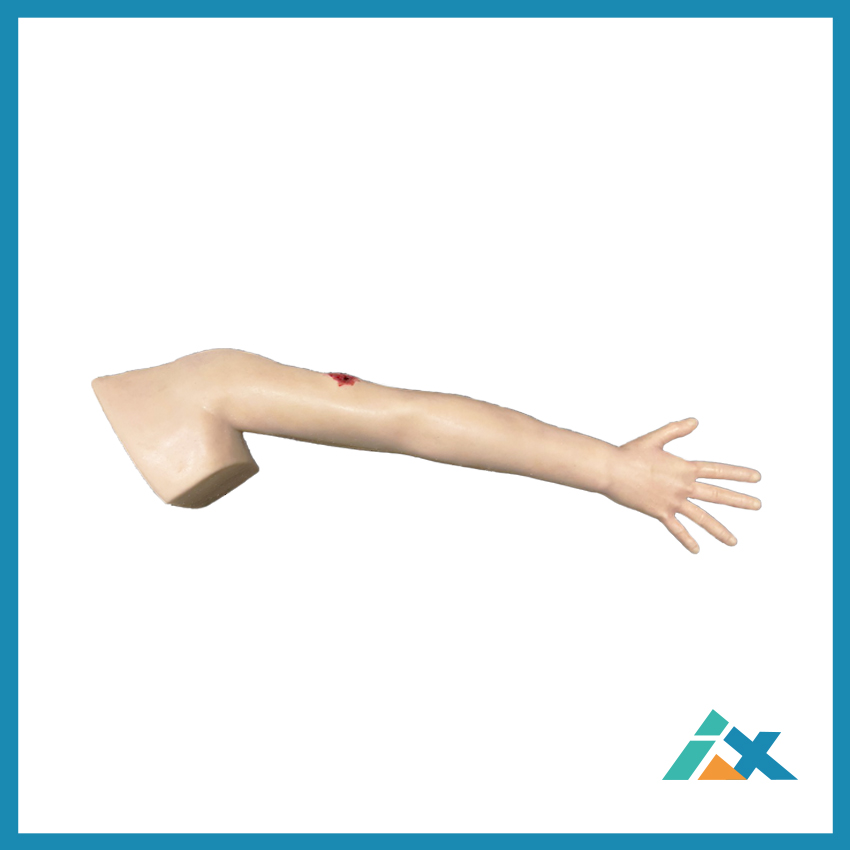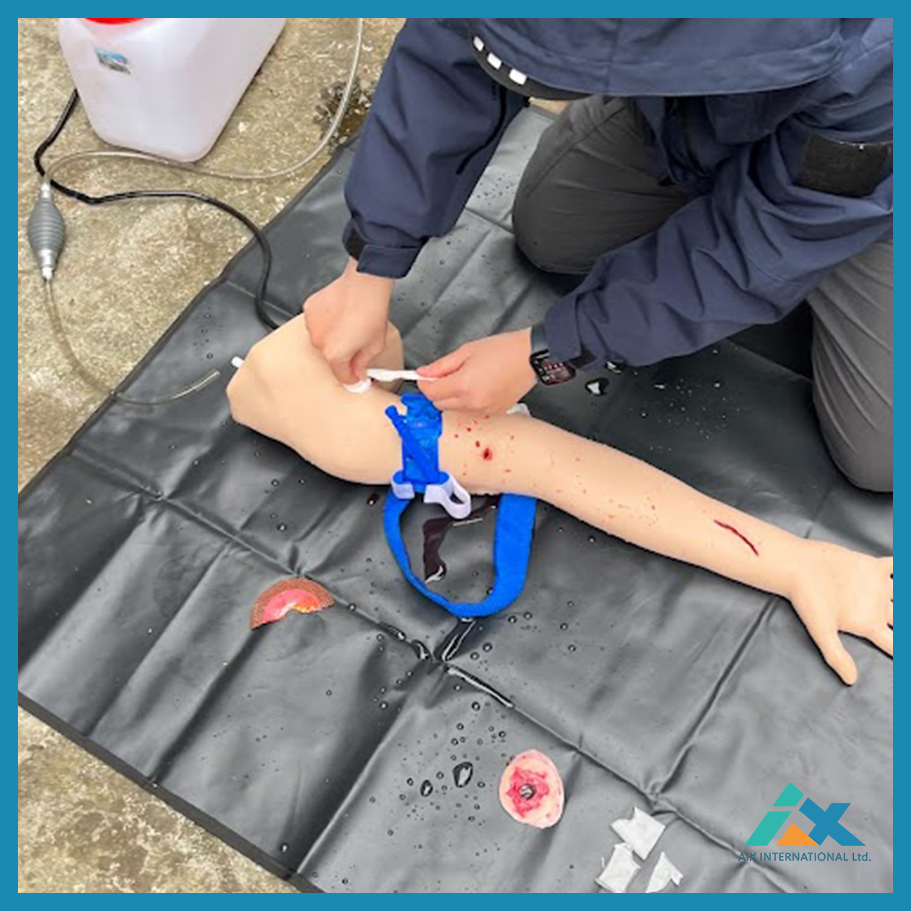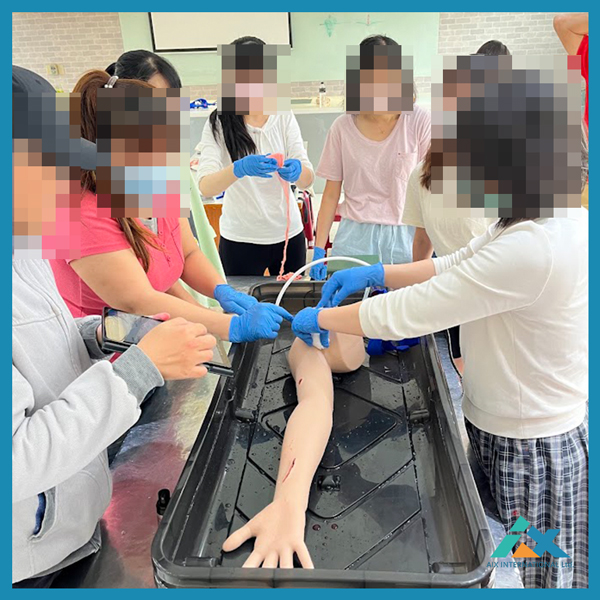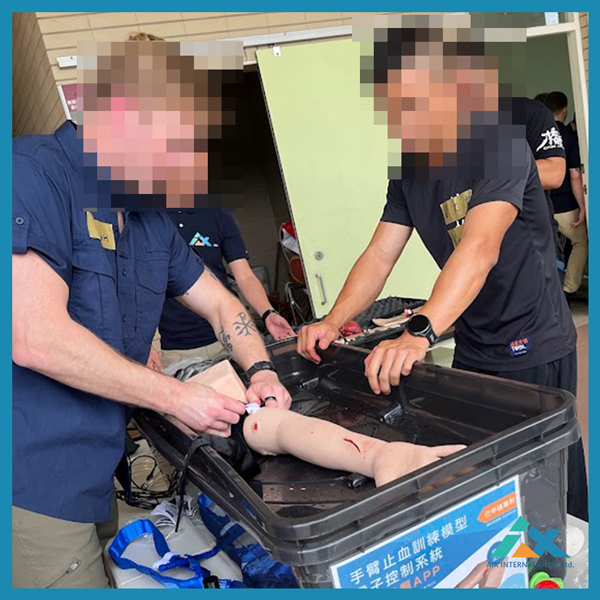PRODUCTSMedical Simulation
Emergency Medical Simulation
- Specification
- Description
- Notes
Material verified by SGS: Heavy metal-free, plasticizer-free, no PAHs.
Silicone Arm Hemostasis Training Model featuring an internal skeleton that simulates bones and a bendable elbow. It comes with three types of simulated injuries to practice tourniquet hemostasis, packing hemostasis, and gauze compression hemostasis, with bleeding simulated via a gravity drainage bag.
- The skin is made of high-quality silicone material, simulating human skin.
- Highly realistic silicone arm.
- Flow control through gravity drainage bag (2L).
- Common simulated wounds (cuts, gunshot wounds, deep wounds).
- For a more realistic effect, use red liquid to simulate bleeding.
- Practice direct pressure.
- Practice tourniquet application.
- Practice wound packing.
- Each wound bleeds independently.
- The material is durable and can be cleaned with soap and water.
Reusable.
-
Receive your order in 2 -4 weeks.
-
Shipped By Dhl, UPS or FedEx in Anonymous Package. Tracking number included.
-
Those specified nationalities are subject to the extra tax.
- Carefully read the product description and specifications to ensure the item meets your needs and expectations.
- Inquire about the actual price, shipping fees, and any additional charges to avoid discrepancies or overpayments.
- Check the product’s stock availability to confirm it is in stock or can be promptly replenished, preventing issues like out-of-stock notifications or shipping delays after ordering.
- Thoroughly review the website’s return and exchange policy before purchasing to ensure you have a fair resolution in case of any issues with the product.
- Choose secure and reliable payment methods, such as online banking, to guarantee a safe payment process.
- Keep your order number and payment receipt safely after purchase for future reference and order verification.
【Basic】Aix ARM - (three types of wounds):
1.Introduction:
In emergency rescue situations, controlling bleeding is an extremely important technique and one of the essential skills every rescuer must possess. During training, rescuers need to learn which methods to use for hemostasis—how to apply pressure, pack wounds, and properly use a tourniquet. When someone is injured in an accident or disaster, effective bleeding control can save the patient's life.Techniques include applying pressure, using a tourniquet, and packing wounds. Through practical experience and repeated training, rescuers can make the correct judgments during actual emergencies.
2.Functionality:
- Direct Pressure Training:
When practicing direct pressure on the arm model, the trainee must locate the injury site and apply firm pressure above the wound using hemostatic gauze to help slow the bleeding. This technique requires a controlled amount of force and pressure, as excessive force can cause further injury. Therefore, rescuers must learn to manage the pressure appropriately to effectively stop the bleeding without causing additional harm. - Tourniquet Training:
In situations where direct pressure is insufficient—such as in cases of massive hemorrhage—using a tourniquet is essential. When applying a tourniquet on the forearm model, it should be positioned above the injury site (closer to the heart) and tightened until the bleeding stops, allowing sufficient time for patient transport and subsequent medical care. It is crucial to master the proper tying technique to ensure effective hemostasis without inducing further damage. - Wound Packing Training:
For deeper or larger wounds, or wounds located at junctional areas of the torso, wound packing is a viable technique. It is recommended to use gauze with hemostatic agents; however, for model training, regular continuous gauze can be used. First, wrap several turns of gauze around the insertion finger to protect it from sharp fragments, then pack the gauze into the wound in the direction toward the heart. Once the wound is filled, apply direct pressure above the wound to help stop the bleeding. This method, which is incorporated into TECC/TCCC training courses, requires repeated practice to effectively manage various injuries and minimize blood loss.
When employing any first aid techniques, proper training is essential, and one must remain vigilant about potential risks and complications.
3.Advantages of Aix ARM Bleeding Control:
-
Realistic Training Environment : Arm Bleeding Control devices are designed to simulate real human anatomy and bleeding scenarios, allowing trainees to practice in a controlled, yet realistic environment. This realistic simulation enhances the trainee’s ability to perform effective hemorrhage control in real-life situations.
-
Versatile Wound Types : Arm Bleeding Control devices often come with various types of wounds, such as lacerations, gunshot wounds, and eviscerations. This variety allows trainees to practice different hemorrhage control techniques, including direct pressure, tourniquet application, and wound packing.
-
Repeated Practice : The durable materials used in Arm Bleeding Control devices enable repeated practice without degrading the quality of the simulation. Trainees can repeatedly apply and refine their techniques, leading to greater proficiency.
-
Safety and Ethical Training : Arm Bleeding Control devices provide a safe and ethical way to practice life-saving techniques. Training on live subjects can be painful and impractical, whereas simulators offer a humane alternative.
-
Immediate Feedback and Learning : Many Arm Bleeding Control devices come with features that provide immediate feedback, such as realistic bleeding responses to applied techniques. This instant feedback helps trainees quickly understand the effectiveness of their interventions.
4.Characteristics:
- The skin is made of high-quality silicone material, simulating human skin.
- Highly realistic silicone arm.
- Flow control through gravity drainage bag (2L).
- Common simulated wounds (cuts, gunshot wounds, deep wounds).
- For a more realistic effect, use red liquid to simulate bleeding.
- Practice direct pressure.
- Practice tourniquet application.
- Practice wound packing.
- Each wound bleeds independently.
- The material is durable and can be cleaned with soap and water.
- Reusable.
5.The contents of the product:
- Silicone Professional Arm for Hemorrhage Control Training (Three Types of Trauma: Tourniquet Application, direct pressure, Wound Packing).
- Product packaging.
- Gravity drainage bag (2 liters).
- Tourniquet is not included in the supply range.
